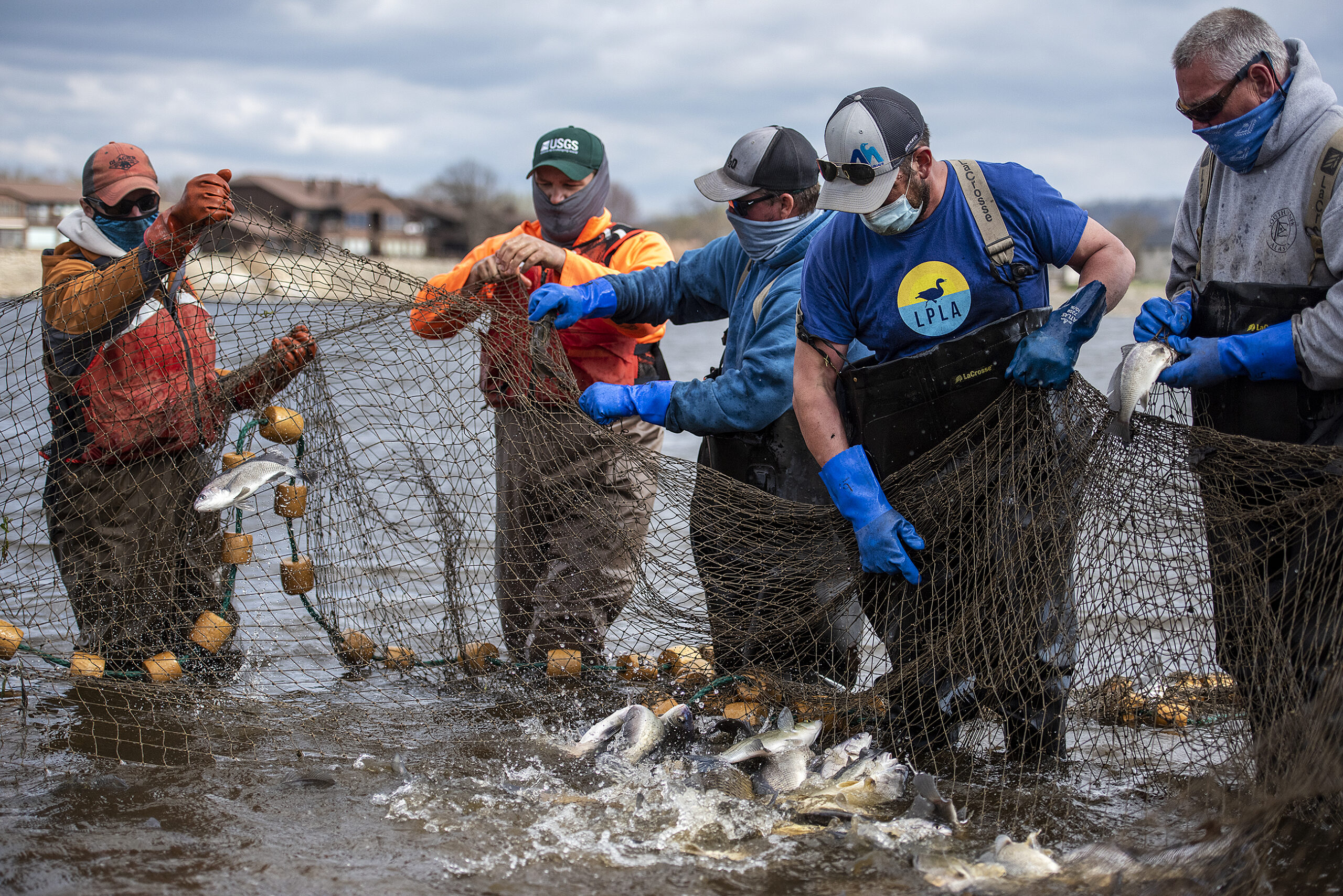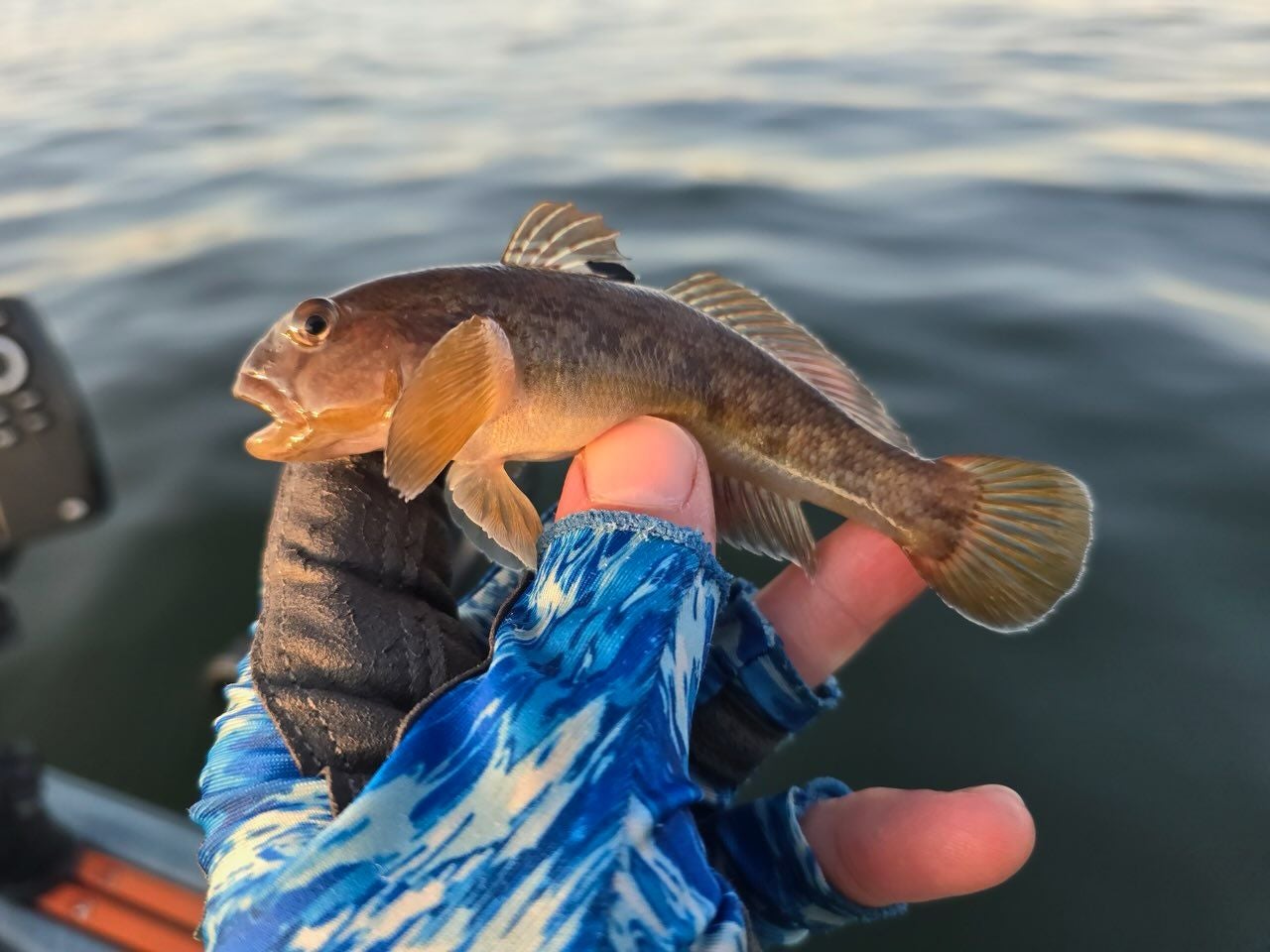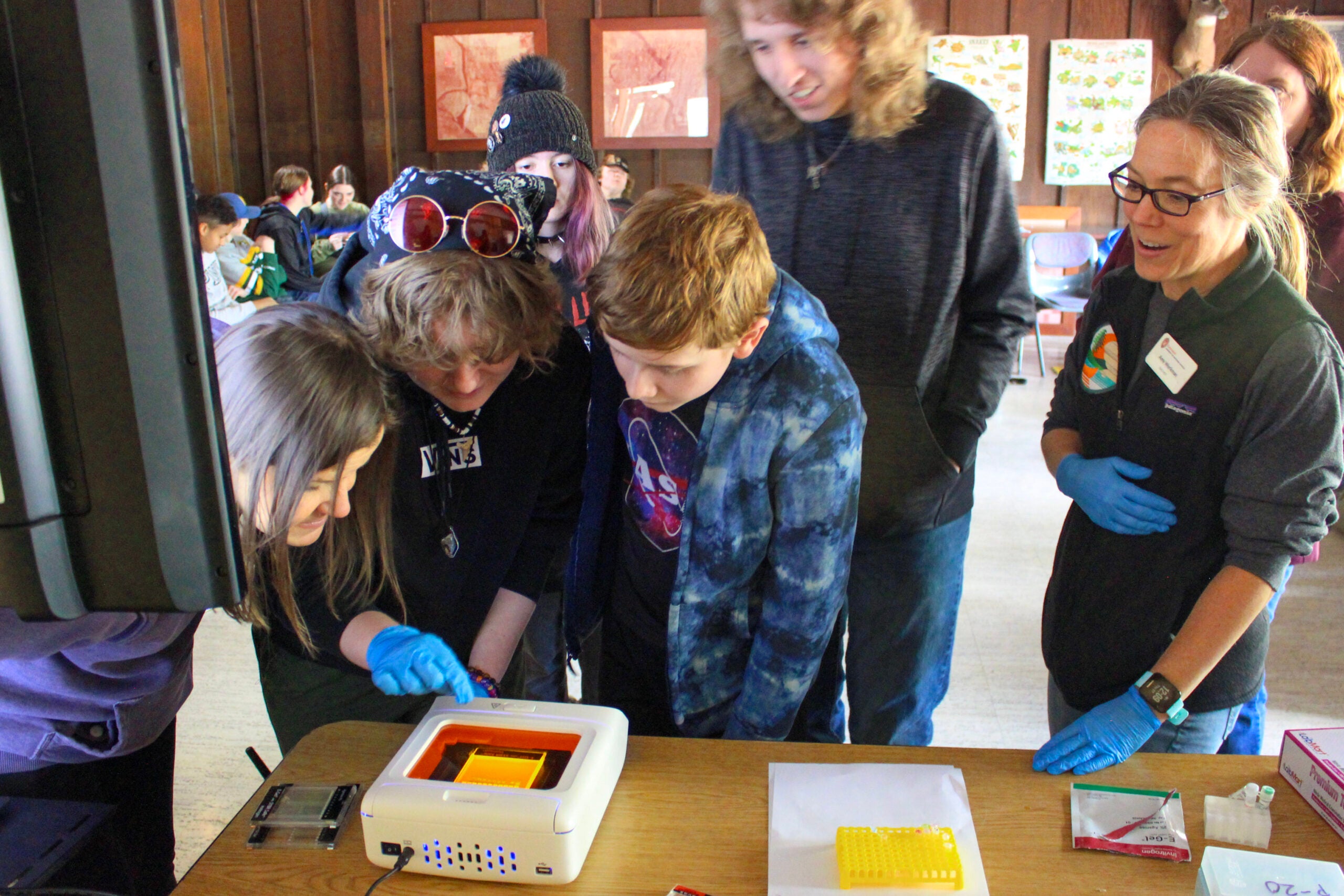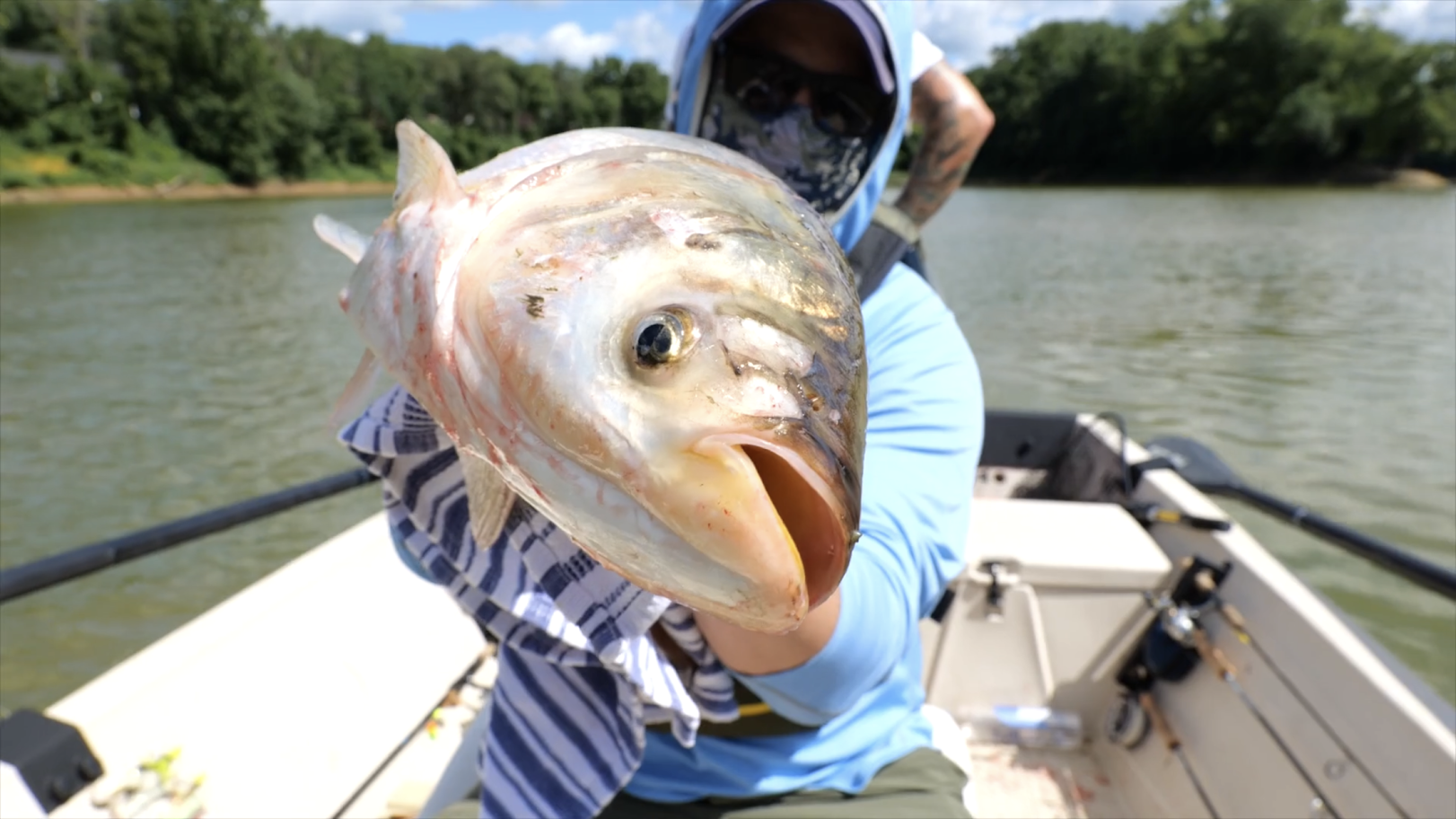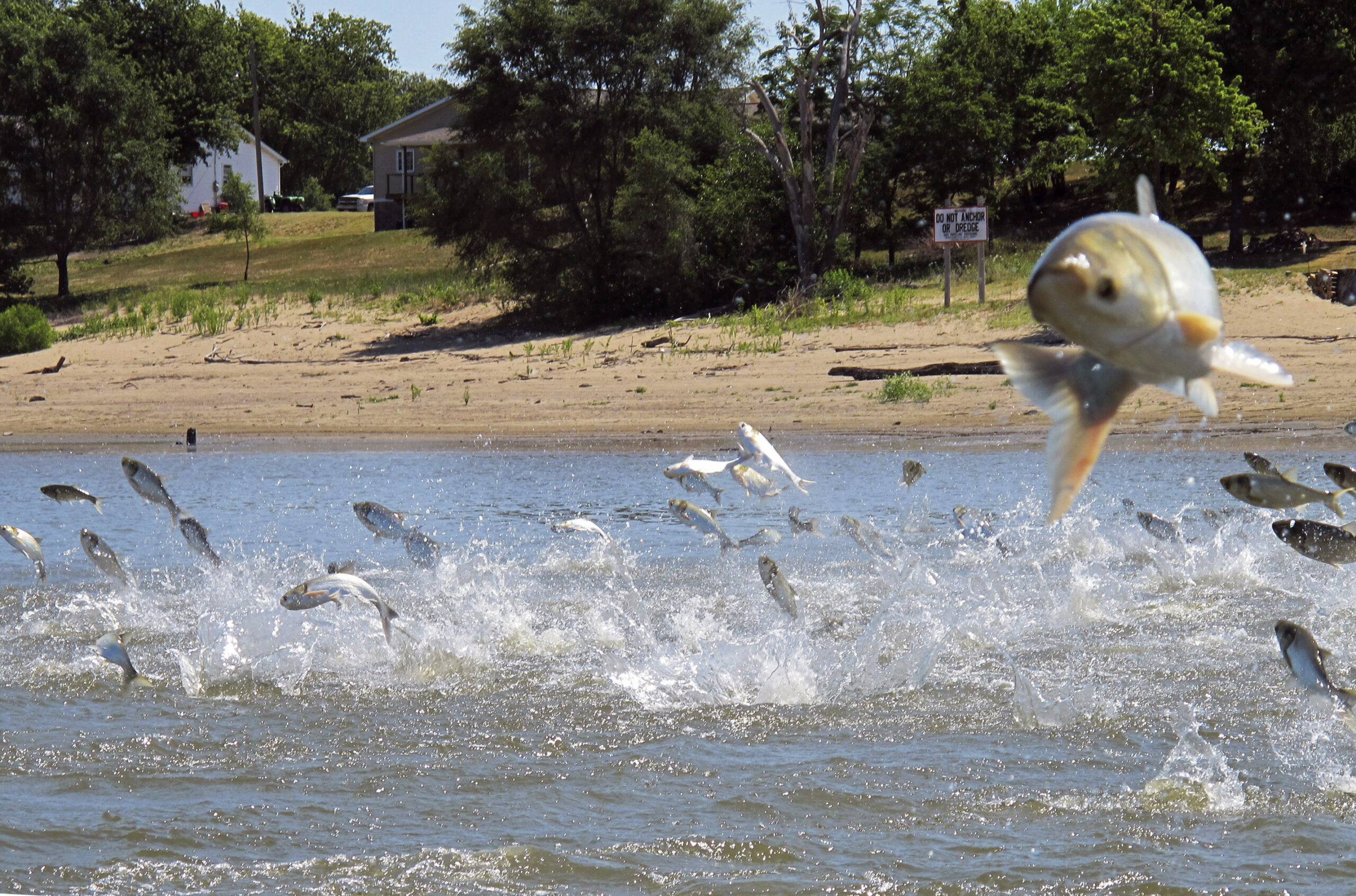Jordan Weeks heads the Wisconsin Department of Natural Resources’ Mississippi River team. He was stationed on the shore of the Black River near the La Crosse Airport last Thursday, helping direct teams of boats trying to capture any invasive carp lurking in the backwaters of the Mississippi River.
The Wisconsin DNR is working with the Minnesota DNR, U.S. Fish & Wildlife Services and the U.S. Geological Survey to try a new method to detect and remove invasive carp species.
Called the “modified unified method,” Weeks said the biologists used thousand-foot block nets to section off parts of the river where they know invasive carp have been found.
News with a little more humanity
WPR’s “Wisconsin Today” newsletter keeps you connected to the state you love without feeling overwhelmed. No paywall. No agenda. No corporate filter.
“They tend to like these little deeper areas with very little current at this time of year. So we section these areas off and we use (underwater) sound and electricity to herd the fish into smaller and smaller cells until we can get around them with a seine (net),” Weeks said.
The seine acts as a fence, drawing in the invasive carp so biologists can remove them from the water.
Weeks said the method originated in China but has been modified by U.S. wildlife officials to remove invasive species like silver, bighead and grass carp from highly populated areas.
He said Wisconsin and Minnesota officials became interested in the method after a commercial fisherman caught almost 50 invasive carp last March near La Crosse.
“We’re using it to see first of all, how many are here, and second as a … learning experience: how does it work where there aren’t very many fish and how efficient are we?” Weeks said.
Weeks said the agencies started the work on April 5 and were planning to keep working for up to 10 days.
After hours of driving the fish and placing nets on Thursday, the team of biologists were left with a net full of flopping fish near shore, where they sorted out and released the native species by hand.
In the end, no invasive carp were found. But Randy Hines, wildlife biologist with the U.S. Geological Survey, said the group caught 29 silver carp the day before, with at least 35 carp avoiding capture by jumping the net.

Hines said most native fish aren’t caught in the final net.
“By using sound underwater that is appropriate for the hearing range of (invasive) carp, they can be driven using those speakers on boats,” Hines said. “Native fish will tend to run and hide as opposed to being driven by these sounds and electrofishing boats.”
Hines said removing the invasive species helps reduce pressure on native fish, allowing them to compete less for resources. He said silver carp and other species have been spotted in increasing numbers in the area and wildlife officials hope the new method could be a tool to manage the spike.
“We’re determining whether the technique could be used for rapid response in the future. If they see new invasions or the population is increasing in a local area, they could go in there and do something about it,” Hines said.
Wisconsin Public Radio, © Copyright 2025, Board of Regents of the University of Wisconsin System and Wisconsin Educational Communications Board.

